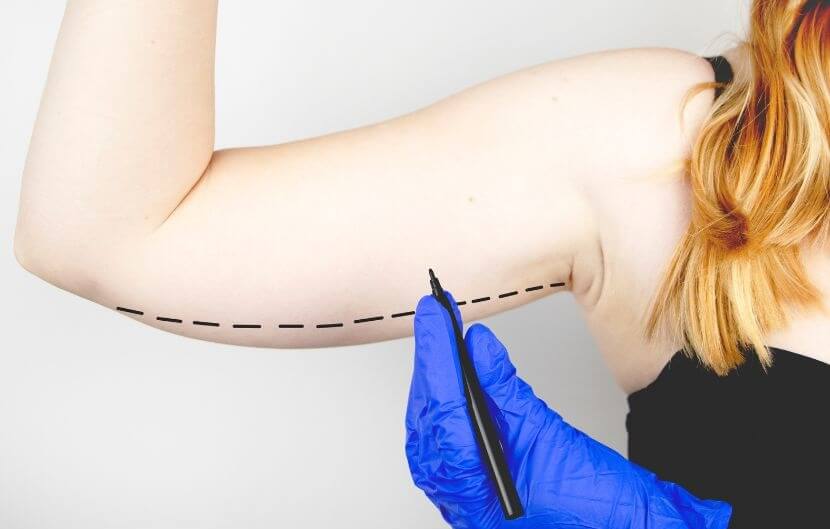Table of Contents
What You Need To Know About Liposuction Recovery: Day-To-Month Process & Drainage After Surgery
Liposuction is a popular cosmetic procedure that can help remove stubborn fat deposits and improve your body contours. However, it is important to understand the liposuction recovery process day-to-month so you can plan for what to expect post-surgery. This article will break down the details of liposuction recovery, including drainage after surgery, in order to help you prepare for the journey ahead.
Introduction to Liposuction
Liposuction is a popular cosmetic procedure that can remove excess fat from various areas of the body, such as the abdomen, thighs, and arms. The recovery process after liposuction surgery is typically short and relatively simple, but there are a few things you should know to ensure a smooth and successful recovery.
Immediately after your surgery, you will be wrapped in compression garments to help minimize swelling and support your new shape. You will likely feel some pain and discomfort during this time, but your surgeon can prescribe medication to help manage this. Most people feel well enough to return home the same day as their surgery.
In the days following your surgery, you will need to take it easy and avoid any strenuous activity or exercises. Walking is encouraged to keep your blood flowing and help with swelling, but be sure to listen to your body and take breaks as needed. You should also avoid sitting or standing for long periods of time.

Once the initial swelling has gone down (usually within 1-2 weeks), you can slowly start incorporating light exercise into your routine. Avoid anything too strenuous or high-impact at first, but gradually increase your activity level as tolerated. It is important to keep up with light exercise and gentle stretching throughout your recovery process to help prevent stiffness and promote healing.
Most people experience some drainage from their incisions for the first week or so after surgery. This is normal and nothing to be concerned about, but be sure to wear
Types of Liposuction
Liposuction can be performed on different areas of the body, including the:
- Arms
- Back
- Buttocks
- Chest
- Flanks
- Inner Thighs
- Neck
- Outer Thighs
- Upper Abdomen
The most common types of liposuction procedures are:
Tumescent Liposuction: This is the most common type of liposuction. It involves injecting a large amount of fluid into the treatment area to help loosen and break up the fat cells. This method is often used on larger areas of the body, such as the thighs or stomach.

Ultrasound-Assisted Liposuction (UAL): This type of liposuction uses sound waves to create heat, which helps to break up the fat cells. UAL is often used on smaller areas of the body, such as the chin or upper arms.
Power Assisted Liposuction (PAL): This type of liposuction uses a mechanical device to help break up and remove the fat cells. PAL is often used on larger areas of the body, such as the thighs or stomach.
What to Expect During Recovery?
Most patients report excellent results after liposuction surgery. Recovery times vary from individual to individual, but are typically short. Most people feel well enough to return to work and other normal activities within a few days to a week. It is important to take it easy during this time and not overdo it, as this can lead to complications.
Drainage tubes are usually removed within a few days of surgery, and any residual bruising and swelling will generally resolve within 2-4 weeks. Although you may feel ready to jump back into your normal routine immediately, it is important to follow your surgeon’s instructions for a safe and successful recovery.
Day 1 – 4 After Surgery
Most people report excellent results from liposuction surgery. However, as with any surgery, there is a period of recovery that follows. Here’s what you need to know about the day-to-month process and drainage after your procedure.
Day 1 – 4 After Surgery:
What can I expect immediately following my procedure?
After your procedure, you will be wrapped in compression garments and given specific instructions on how to care for your incisions. You will also be given pain medication to help keep you comfortable during the first few days of your recovery. It is important to keep your incisions clean and dry during this time.
What are the side effects of liposuction?
The side effects of liposuction are usually mild and temporary. You may experience bruising, swelling, and soreness around the treatment area. These side effects should resolve within a few weeks. If you have any concerns about your side effects, please call our office so we can help you manage them effectively.
When can I return to work after my procedure?
Most people feel well enough to return to work within a few days of their procedure. However, if your job requires physical labor or heavy lifting, you may need to take a few extra days off to recover fully.
Week 1 – 2 After Surgery
The first week or two after surgery will be the most difficult in terms of recovery. You will be swollen and bruised, and may have some drainage from your incisions. Your surgeon will likely prescribe pain medication and antibiotics to help you through this time. You will need to sleep with your head elevated on pillows to help reduce swelling. Ice packs can also be used to help with swelling and pain. It is important to keep your surgical area clean and dry during this time. You will likely need to wear a compression garment day and night for the first week or two, which will help with swelling and support your incisions. Gentle walking is encouraged, but you should avoid strenuous activity or lifting anything heavy during this time.
Month 1 – 3 After Surgery
The first few weeks after surgery are the most critical for recovery. During this time, you will need to take it easy and allow your body to heal. Here are a few things to expect during the first few months after surgery:
- You will likely experience some bruising and swelling. This is normal and will subside over time.
- You may also have drainage tubes in place to help with any excess fluid build-up.
- You will need to wear a compression garment to help reduce swelling and support your new shape.
- You will need to take care when moving or bending to avoid putting unnecessary strain on your incisions.
By following your surgeon’s instructions and taking things slow, you’ll be on your way to enjoying your new look in no time!
Drainage After Liposuction
Most liposuction patients report excellent results following surgery. The vast majority are very pleased with their new shape and enjoy a significant boost in self-confidence. However, as with any surgery, there is a period of recovery that must be followed in order to ensure proper healing. Here we will discuss what you can expect in the days and weeks following your procedure, including drainage after surgery.
Immediately following your liposuction procedure, you will be wrapped in compression garments. These are designed to help reduce swelling and support your new shape as you heal. You will need to wear these for at least the first week, and possibly longer depending on your surgeon’s instructions.
You will also have drains placed under your skin during surgery. These drains help to remove excess fluid from the surgical area and prevent build-up of fluid (seroma). The drains will be removed within a few days after surgery, once the output has decreased.
In the first few days following surgery, it is normal to experience some bruising and swelling. This will gradually subside over the course of a week or two. You may also have some numbness in the treated area, which is also temporary and will resolve over time.
Most people take about 1-2 weeks off from work or other regular activities following liposuction surgery. During this time, you should rest as much as possible and avoid any strenuous activity or exercise. Walking is fine, but anything that raises your heart rate
Tips for Recovery
Most people report excellent results after liposuction surgery. However, as with any surgical procedure, there is a period of recovery that follows. Here are some tips to help you through the process:
- Follow your surgeon’s instructions: This is important for all aspects of your recovery, but especially when it comes to drainage. You will likely have drains placed during surgery, which will need to be monitored and emptied regularly.
- Take it easy: Rest is crucial in the early stages of recovery.Your body needs time to heal, so don’t overdo it.
- Be patient: It can take several months for your results to fully show. Don’t be discouraged if you don’t see immediate results; they will come in time.
- Keep up with your follow-up appointments: These are important for both your surgeon and yourself. Your surgeon will want to monitor your progress and ensure that everything is healing properly.
- Listen to your body: Recovery is different for everyone, so pay attention to how you’re feeling and take things at your own pace. If something doesn’t feel right, don’t hesitate to reach out to your surgeon
Possible Complications & Risks Involved with Liposuction
Liposuction is generally a safe and effective procedure, but as with any surgery, there are potential risks and complications involved. These can include:
- Infection
- Excessive bleeding or bruising
- Nerve damage
- Fluid accumulation (seroma)
- Skin irregularities or contour deformities
- Allergic reactions to the anesthesia or other medications used during the procedure
- Damage to internal organs (rare)
Most of these complications are rare and can usually be treated effectively if they do occur. It is important to discuss all potential risks and complications with your surgeon before undergoing liposuction.
Conclusion
Liposuction is a great way to improve your overall body shape and reduce unwanted fat. However, there are very specific steps that should be taken in order for you to have the best possible recovery experience. Understanding what will happen during your liposuction recovery process and taking the necessary precautions can help ensure a successful outcome. Make sure to listen to your doctor’s advice and follow their recommendations so that you can enjoy the results of your surgery for years to come!

